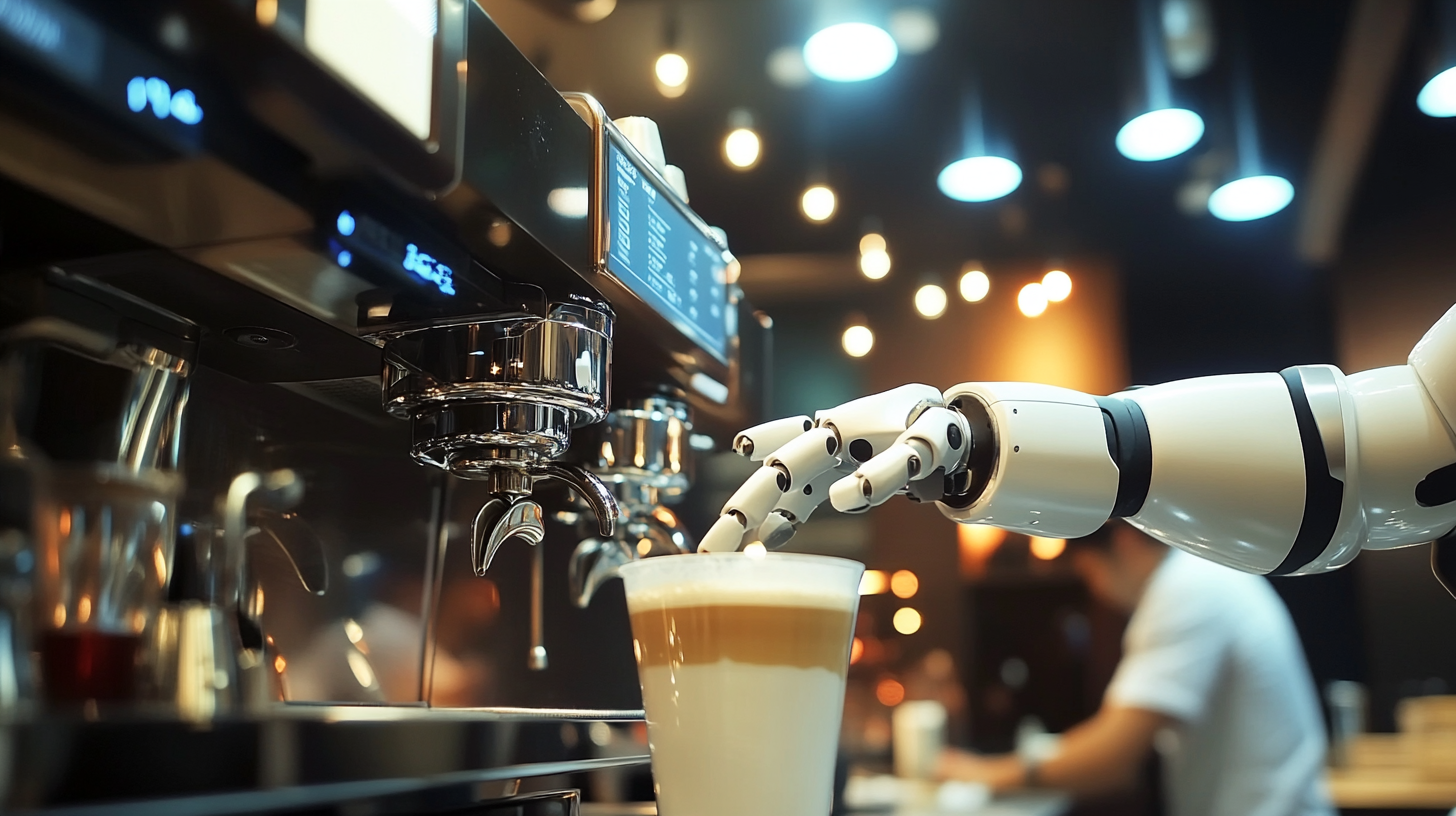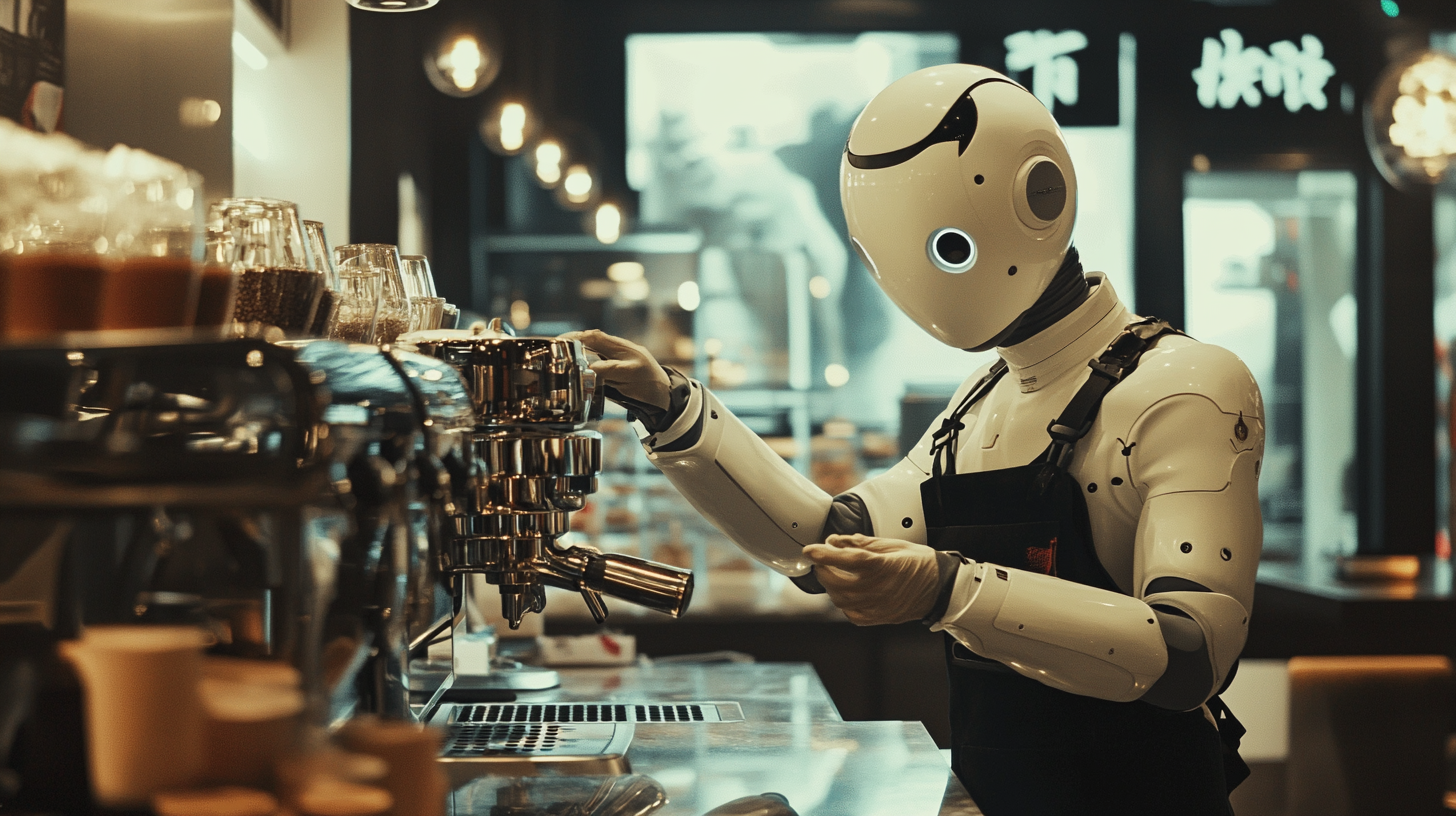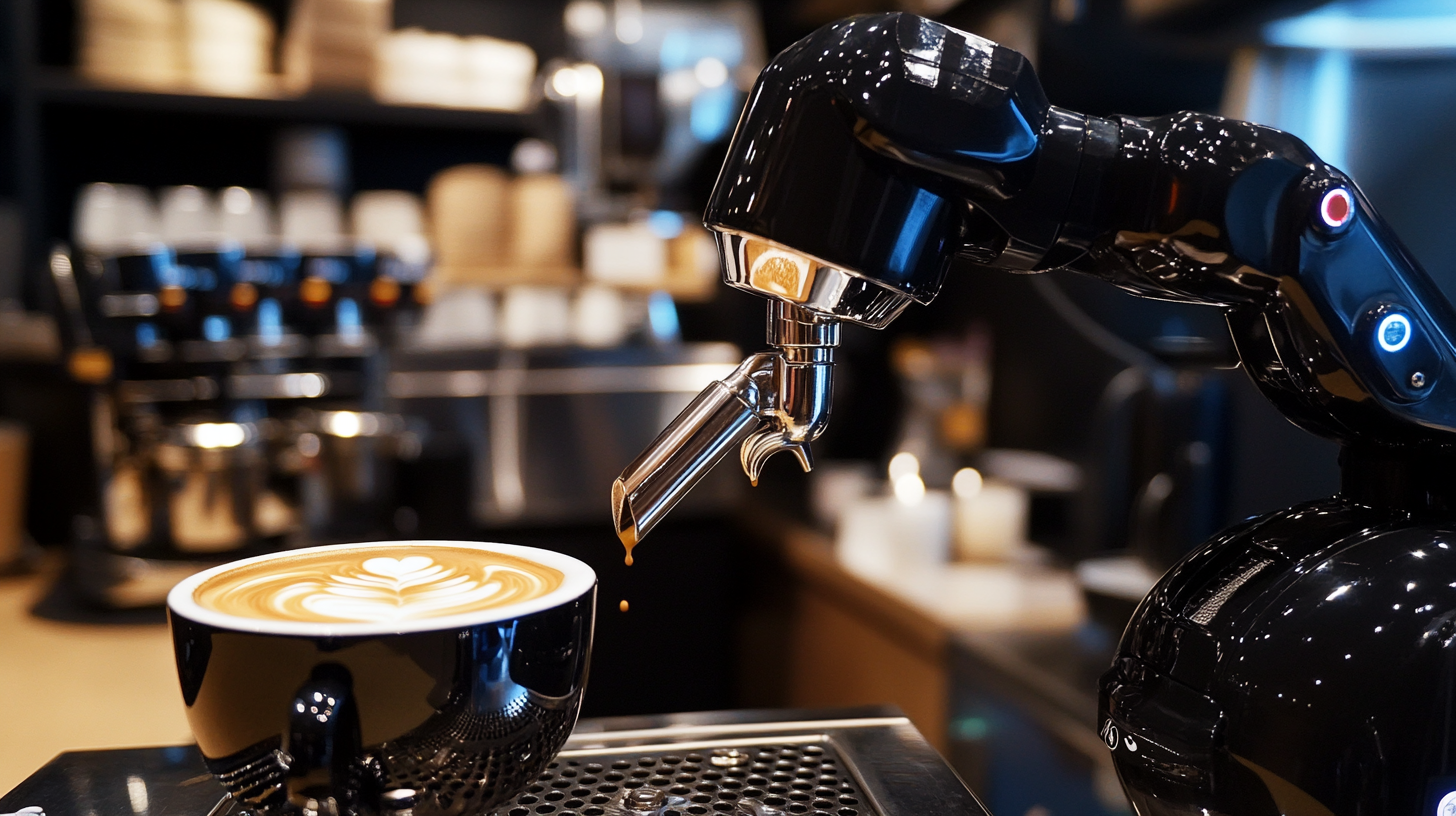Top Robot Barista Comparisons in Singapore Uncovering the Best Options for Global Buyers
In the vibrant and rapidly evolving landscape of the coffee industry, Robot Barista Singapore has emerged as a remarkable innovation, captivating both local and global coffee enthusiasts. As robotic technology continues to advance, the demand for efficient and high-quality coffee service solutions is on the rise. This blog aims to explore the top robot barista options available in Singapore, shedding light on their features, performance, and overall value.

With numerous suppliers entering the market, finding a reliable provider can be daunting for buyers worldwide. We will guide you through essential considerations in identifying top-tier suppliers, ensuring you make informed decisions when selecting the best robot barista solutions for your needs.
Join us as we uncover the finest options that promise efficiency and exceptional coffee experiences.
Emerging Trends: The Rise of Robot Baristas in Singapore’s Coffee Scene
 The coffee scene in Singapore is experiencing a fascinating evolution with the rise of
robot baristas, a trend that is reshaping how consumers interact with their favorite beverage.
According to a report by Allied Market Research, the global coffee market is projected to reach
USD 155.64 billion by 2020, and the integration of robotics is set to play a significant role in capturing a slice of this market.
In Singapore, cafes are now adopting robots to streamline service, enhance customer experience, and meet the increasing demand for efficiency.
The coffee scene in Singapore is experiencing a fascinating evolution with the rise of
robot baristas, a trend that is reshaping how consumers interact with their favorite beverage.
According to a report by Allied Market Research, the global coffee market is projected to reach
USD 155.64 billion by 2020, and the integration of robotics is set to play a significant role in capturing a slice of this market.
In Singapore, cafes are now adopting robots to streamline service, enhance customer experience, and meet the increasing demand for efficiency.
As this trend unfolds, buyers looking to invest in robotic coffee-making solutions should consider a few key tips. Firstly, assess the technological capabilities of the robot. For instance, systems like Cafe X utilize advanced AI to prepare personalized coffee orders, which can significantly improve customer satisfaction. Secondly, evaluate the integration process into your existing operations; seamless integration can minimize disruptions and accelerate the return on investment. Lastly, consider customer engagement features, as an interactive robotic barista can attract more foot traffic and create a unique selling proposition for your establishment.
The emergence of robot baristas not only caters to the fast-paced lifestyle of Singaporeans but also highlights a growing preference for novelty in coffee consumption. The synergy of technology and tradition in coffee-making is drawing attention from global buyers eager to adopt these innovative solutions in their own markets.
A Comparative Analysis: Top Robot Barista Models Available in Singapore
The rise of robot baristas in Singapore has transformed the coffee scene, showcasing advanced technology that appeals to both locals and global buyers. This comparative analysis delves into the top robot barista models available, shedding light on their unique features and capabilities. From precision brewing to automated customer interactions, these machines are not just a novelty; they represent a shift towards efficiency and quality in coffee preparation.

Among the leading models, BaristaBot stands out for its sophisticated brewing techniques and user-friendly interface. Equipped with AI algorithms, it learns individual preferences, ensuring that each cup is tailored to the customer's taste. Alternatively, RoboCoffee focuses on a sleek design that integrates seamlessly into modern cafes, while its efficient service speeds up order fulfillment without compromising on flavor. Each model brings its own strengths to the table, making it essential for buyers to assess their specific needs and the environment in which the robot will operate.
Global Buyers’ Insights: Features to Look for in Robot Baristas
As the demand for automation in the food and beverage industry rises, robot baristas are emerging as a compelling investment for global buyers. Industry reports estimate that the market for robotic café solutions is projected to grow at a CAGR of over 20% through 2026, driven by advancements in technology and rising labor costs. When considering a robot barista, global buyers should focus on several key features that can enhance operational efficiency and customer satisfaction.
One essential feature to look for is the ability to customize beverages. Reports indicate that 75% of consumers prefer products that can be tailored to their taste preferences. Additionally, user-friendly interfaces and seamless integration with mobile ordering systems are crucial — statistics reveal that 60% of millennials are likely to order from a mobile app, highlighting the need for modern functionality in automated services. Moreover, performance metrics such as speed and consistency remain vital, as studies show that 80% of café customers value service speed alongside beverage quality.
The design and footprint of the robot barista are also significant considerations. Market research suggests that compact models that fit into diverse venue sizes can help expand operational possibilities for buyers looking to maximize space efficiency. Understanding these features can empower global buyers to make informed decisions and ultimately lead to greater success in the burgeoning robotic coffee market.
Top Robot Barista Comparisons in Singapore Uncovering the Best Options for Global Buyers
| Model | Coffee Types | Brew Time (minutes) | User Rating | Price Range (SGD) |
|---|---|---|---|---|
| Model A | Espresso, Americano | 2 | 4.5/5 | 800 - 1200 |
| Model B | Latte, Cappuccino | 3 | 4.2/5 | 1000 - 1500 |
| Model C | Espresso, Mocha | 1.5 | 4.8/5 | 900 - 1300 |
| Model D | Americano, Flat White | 2.5 | 4.1/5 | 700 - 1100 |
| Model E | Cappuccino, Macchiato | 2 | 4.6/5 | 950 - 1400 |
Cost Considerations: Evaluating the Investment in Robot Barista Technology
The surge in popularity of robot baristas in Singapore reflects a growing trend in the global food and beverage sector, driven by advancements in automation technology. Investing in robot barista systems can vary significantly based on initial costs and ongoing maintenance. According to a report by Statista, the global coffee machine market is projected to reach $4.4 billion by 2027, indicating a strong consumer interest that can justify the investment in these automated solutions. Businesses may expect to spend between $15,000 to $30,000 for a fully functional robot barista, with some high-end models culminating in fees upward of $100,000.
Moreover, the return on investment can be substantial. A case study from Cafe X, a leading robotic coffee shop in San Francisco, demonstrated that automated baristas could serve coffee at a rate of 120 cups per hour, significantly reducing labor costs and wait times during peak hours. A McKinsey report highlighted that many cafés can expect to recover their investment within 18-24 months, considering increased efficiency and potential labor savings. Thus, while the initial costs may seem daunting, the long-term financial and operational benefits present a compelling case for global buyers considering robotic barista technology.
Cost Considerations for Robot Barista Technology
This chart compares the estimated initial investment and maintenance costs of various robot barista technologies.
Future Prospects: How Chinese Manufacturing is Shaping Global Robot Barista Trends
The rise of robot baristas has transformed the coffee industry in dynamic ways, particularly in Singapore, where innovation meets tradition. As we delve into the future prospects of these automated coffee makers, it's crucial to recognize the significant role that Chinese manufacturing plays in shaping global trends. Chinese manufacturers have become pioneers in robotics, leveraging advanced technologies and economies of scale to produce high-quality barista robots that cater to diverse markets.
In Singapore, these robots have not only enhanced efficiency but have also attracted international attention due to their ability to deliver consistent quality and unique brewing methods. The integration of artificial intelligence in Chinese-manufactured baristas allows for personalized customer experiences, aligning with the growing trend of customization in the food and beverage sector.
As global buyers explore the best options, the influence of China’s innovative manufacturing processes is evident, paving the way for a new era of coffee service that blends robotics with customer engagement.
As these trends continue to evolve, we can expect to see a surge in global demand for robot baristas that embody the cutting-edge technology and craftsmanship coming out of China. This not only represents a shift in how coffee is prepared and served but also reflects a broader movement towards automation in hospitality, indicating that the future of coffee culture may well be brewed by robots.
 -->
-->